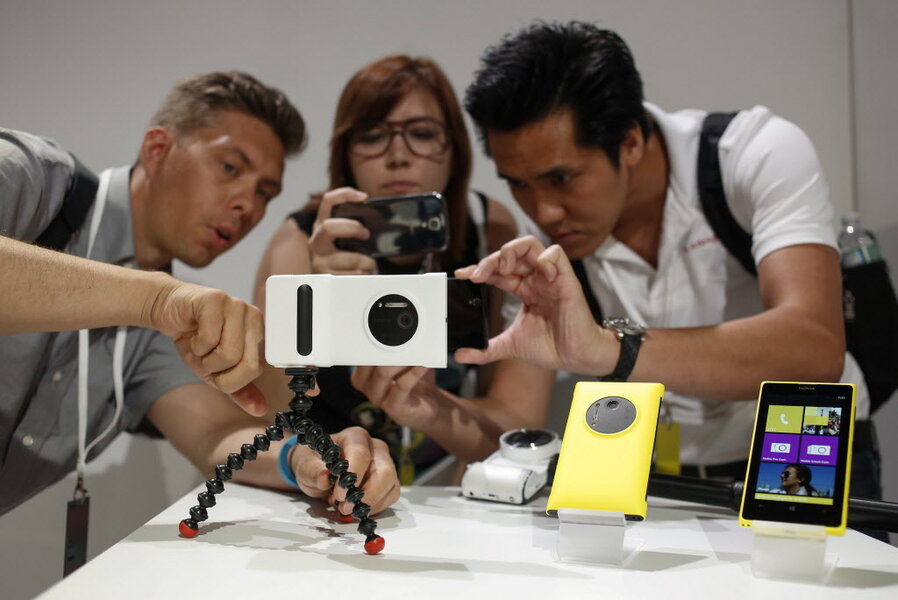Nokia introduced new smartphone: Lumia 1020
Loading...
Nokia on Thursday introduced a new smartphone, the Lumia 1020, with a powerful 41-megapixel camera in its latest bid to catch up with rivals Samsung Electronics Co Ltd and Apple Inc.
Many tech bloggers applauded the model's camera after Chief Executive Stephen Elop demonstrated features including "floating lens" technology that adjusts for camera shake and six-lens optics that help produce sharper images.
"The hardware's a beauty on this thing," said tech website Endgadget.
Many analysts, however, questioned whether a good camera was enough to help Nokia, suffering a fall in cash reserves after years of poor sales, survive.
The Finnish mobile phone maker is pinning its hopes for a comeback in smartphones on Microsoft Corp's Windows Phone - an operating system that is struggling to compete with Google's popular Android system.
While regular mobile phones still account for the bulk of its shipments, smartphones are viewed as crucial for its long-term survival because of their higher margins and increasing consumer demand.
"The imaging capabilities here are extraordinary," said Current Analysis analyst Avi Greengart, noting that the camera sensors on rival high-end phones typically have between 8-12 megapixels.
But he added: "It's still a Windows Phone ... if somebody is looking for applications they're still going to look at iPhone."
The new Lumia, which use Windows software, will be sold through U.S. carrier AT&T Inc starting July 26 for $299.99 with a two-year contract, and will be available later in other markets including China, Nokia said.
Telefonica SA will be its carrier partner in European and Latin American markets, it said.
Earlier Lumia models also won positive reviews from critics and technology blogs but have failed to halt a shift to Android phones. Android and Apple's iOS together account for over 90 percent of smartphone sales, according to research firm IDC.
One major handicap has been a lack of apps. Windows Phone has only 160,000 apps in store, while rivals offer about five times as many because developers prefer to make them for the higher-volume operating systems.
"Despite the quality of the device, I have some serious doubts about whether it will change Nokia's fortunes, and it risks becoming a niche product," said IDC analyst Francisco Jeronimo, emphasizing a need for Nokia to step up marketing of its products.
In addition to a lack of apps, analysts have also blamed Nokia's weak sales on poor marketing efforts. Many have said telecom carrier partners, particularly in the United States, have failed to promote Nokia to their customers.
Elop said Nokia was pooling resources with AT&T and Microsoft to market the Lumia 1020.
"This is the first real glimmer of hope for Nokia's resurgence and the viability of the Windows ecosystem in smartphones - provided Nokia, Microsoft, and their operator partners can convince consumers that this experience is indeed a leap forward," said Forrester Research analyst Charles Golvin. "That will be the real hard work."







